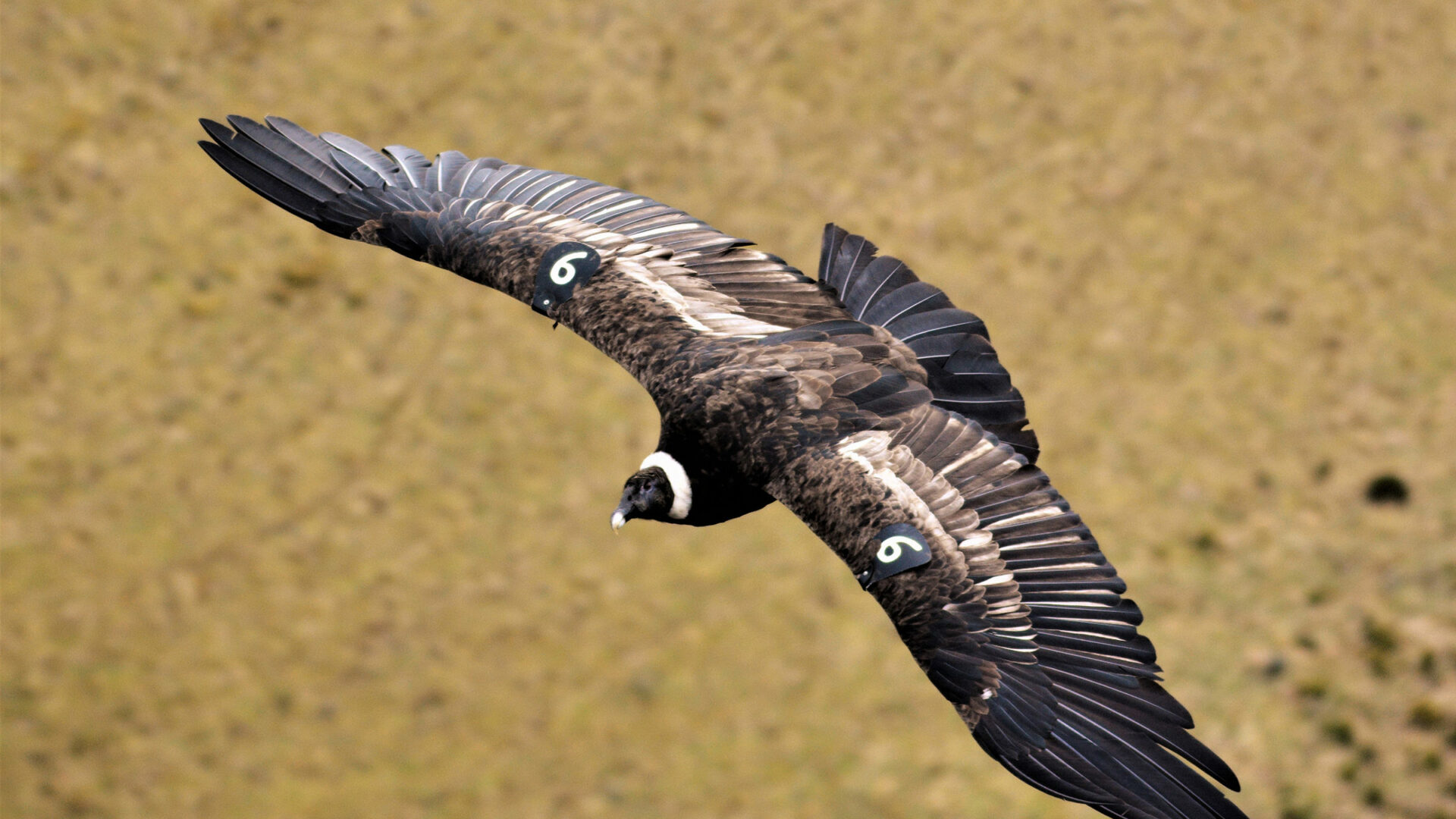Watching the Andean condor (Vultur gryphus) fly is a unique spectacle. One of the largest birds in the world, the majestic animal can reach weights of up to 15 kilograms and have a wingspan of over 3 meters. Using wind currents to stay aloft and travel great distances, Andean condors have been sighted resting and feeding on cliffs off the Pacific coasts of Chile and Peru, more than 100 kilometers from their inland nests. Their flights have also been recorded at heights of nearly 7,000 meters.
But even these characteristics are not always enough to protect Andean condors. In recent years, the species has been hit by multiple threats, including habitat loss and ranchers leaving poison on carrion in attempts to protect their livestock. Alongside these worrying developments, condor flights are also said to have been increasingly disrupted by a growing, unforeseen threat: wind energy projects.
Fabricio Narváez, founding partner and researcher for the Andean Condor Foundation (FCA), based in Ecuador’s capital city Quito, explains that there are two main threats: the “barrier effect,” in which wind turbines act as obstacles to a bird’s path, and collisions with the blades.
It is estimated that Andean condors can live over 50 years in the wild and around 80 years in captivity. But the bird – a national symbol of Chile, Colombia, Peru, Bolivia, and Ecuador – has a very low reproduction rate, laying one egg every two to three years.
The International Union for the Conservation of Nature (IUCN) classifies the condor as a vulnerable species, with just some 6,700 specimens recorded in South America. The condor population is thought to have declined by between 30 and 49 percent in recent decades, and the organization notes that there are only 150 left in Ecuador, where it is considered endangered.
Fighting in the air
The FCA estimates that in the coming years, 20 wind farms will be built in the Andean condor’s Ecuadorian habitats. The most recent one to be inaugurated was Minas de Huascachaca, the country’s largest wind farm, in operation since March 2023. Located in Saraguro, in the province of Loja and the southern Ecuadorian highlands, the facility has a capacity of 50 megawatts and supplies electricity to 90,000 households. However, since its inception in 2017, its works have been fraught with controversy.

A 2022 investigation by journalists for Ecuadorian platform Periodismo de Investigación revealed irregularities in the contracting and subcontracting processes for the farm, namely...


 Search
Search











































